Zefeng Li
GroundingGPT:Language Enhanced Multi-modal Grounding Model
Jan 30, 2024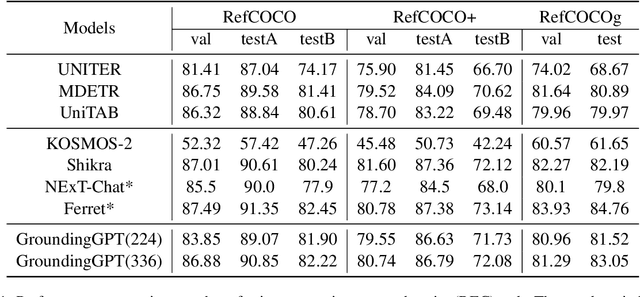
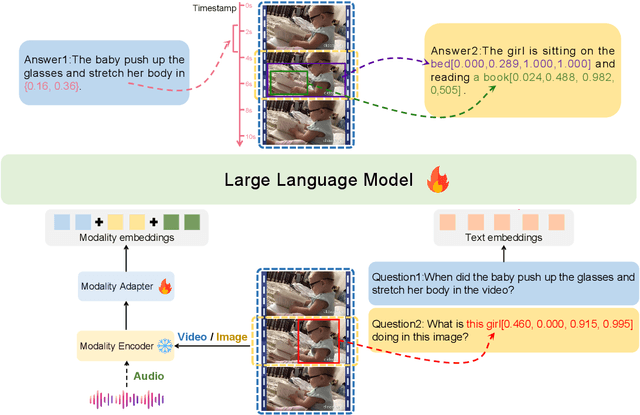
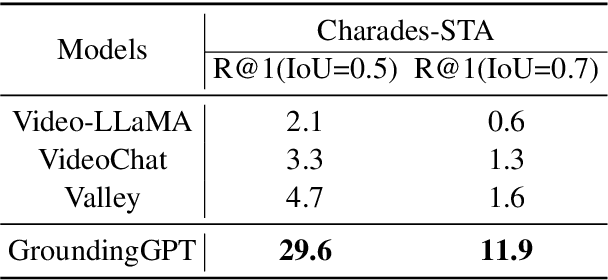
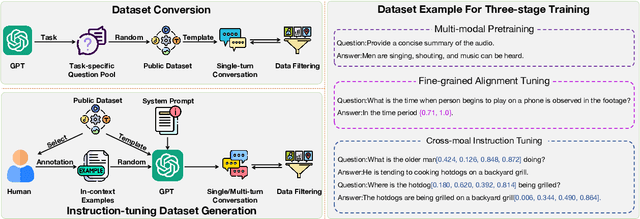
Abstract:Multi-modal large language models have demonstrated impressive performance across various tasks in different modalities. However, existing multi-modal models primarily emphasize capturing global information within each modality while neglecting the importance of perceiving local information across modalities. Consequently, these models lack the ability to effectively understand the fine-grained details of input data, limiting their performance in tasks that require a more nuanced understanding. To address this limitation, there is a compelling need to develop models that enable fine-grained understanding across multiple modalities, thereby enhancing their applicability to a wide range of tasks. In this paper, we propose GroundingGPT, a language enhanced multi-modal grounding model. Beyond capturing global information like other multi-modal models, our proposed model excels at tasks demanding a detailed understanding of local information within the input. It demonstrates precise identification and localization of specific regions in images or moments in videos. To achieve this objective, we design a diversified dataset construction pipeline, resulting in a multi-modal, multi-granularity dataset for model training. The code, dataset, and demo of our model can be found at https: //github.com/lzw-lzw/GroundingGPT.
SeisCLIP: A seismology foundation model pre-trained by multi-modal data for multi-purpose seismic feature extraction
Sep 05, 2023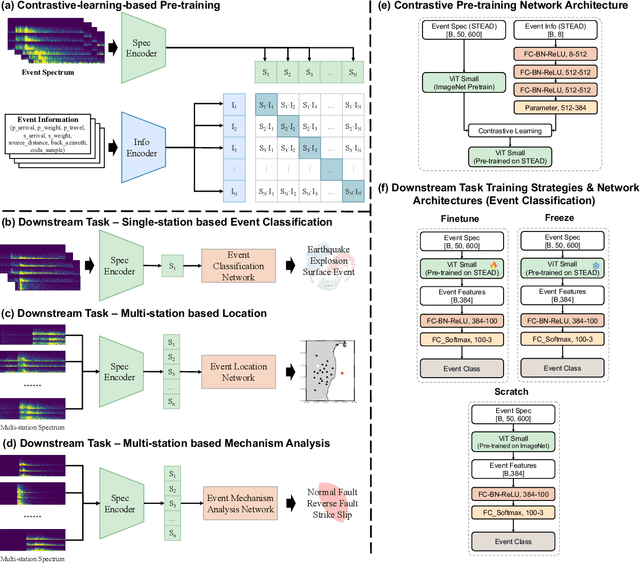

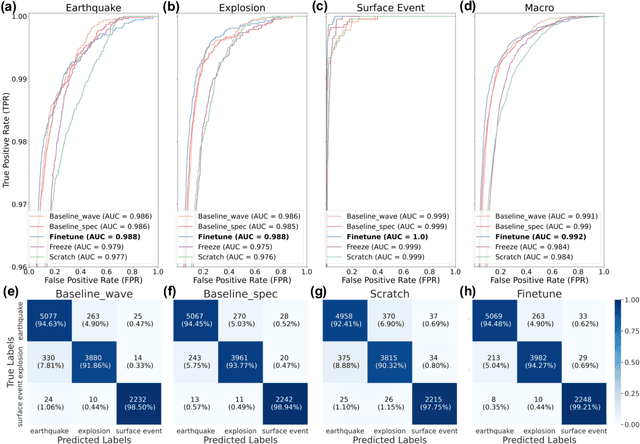
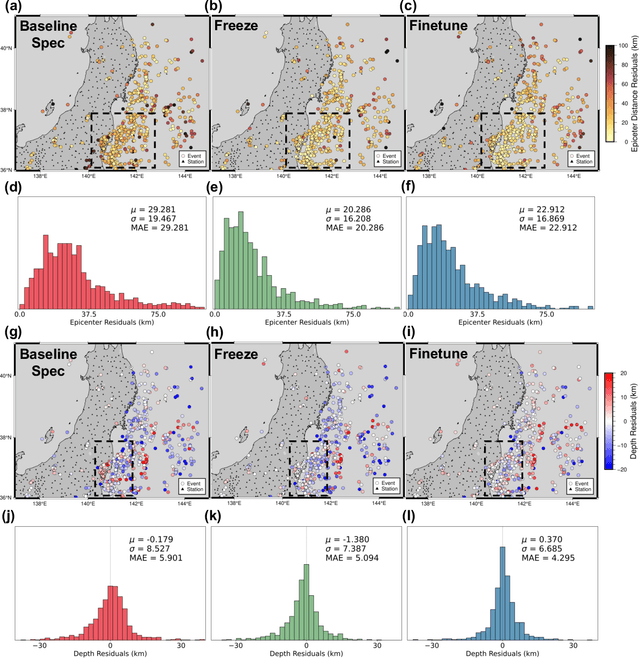
Abstract:Training specific deep learning models for particular tasks is common across various domains within seismology. However, this approach encounters two limitations: inadequate labeled data for certain tasks and limited generalization across regions. To address these challenges, we develop SeisCLIP, a seismology foundation model trained through contrastive learning from multi-modal data. It consists of a transformer encoder for extracting crucial features from time-frequency seismic spectrum and an MLP encoder for integrating the phase and source information of the same event. These encoders are jointly pre-trained on a vast dataset and the spectrum encoder is subsequently fine-tuned on smaller datasets for various downstream tasks. Notably, SeisCLIP's performance surpasses that of baseline methods in event classification, localization, and focal mechanism analysis tasks, employing distinct datasets from different regions. In conclusion, SeisCLIP holds significant potential as a foundational model in the field of seismology, paving the way for innovative directions in foundation-model-based seismology research.
Multi-task multi-station earthquake monitoring: An all-in-one seismic Phase picking, Location, and Association Network (PLAN)
Jun 24, 2023



Abstract:Earthquake monitoring is vital for understanding the physics of earthquakes and assessing seismic hazards. A standard monitoring workflow includes the interrelated and interdependent tasks of phase picking, association, and location. Although deep learning methods have been successfully applied to earthquake monitoring, they mostly address the tasks separately and ignore the geographic relationships among stations. Here, we propose a graph neural network that operates directly on multi-station seismic data and achieves simultaneous phase picking, association, and location. Particularly, the inter-station and inter-task physical relationships are informed in the network architecture to promote accuracy, interpretability, and physical consistency among cross-station and cross-task predictions. When applied to data from the Ridgecrest region and Japan regions, this method showed superior performance over previous deep learning-based phase-picking and localization methods. Overall, our study provides for the first time a prototype self-consistent all-in-one system of simultaneous seismic phase picking, association, and location, which has the potential for next-generation autonomous earthquake monitoring.
Deep learning for seismic phase detection and picking in the aftershock zone of 2008 Mw7.9 Wenchuan
Jan 18, 2019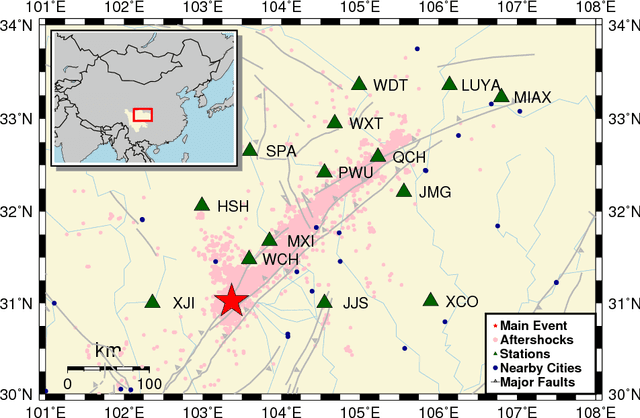

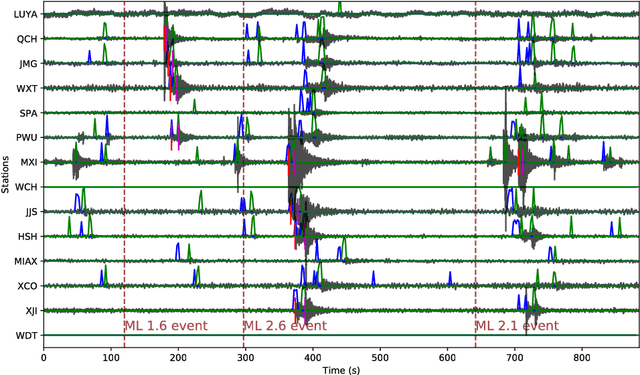
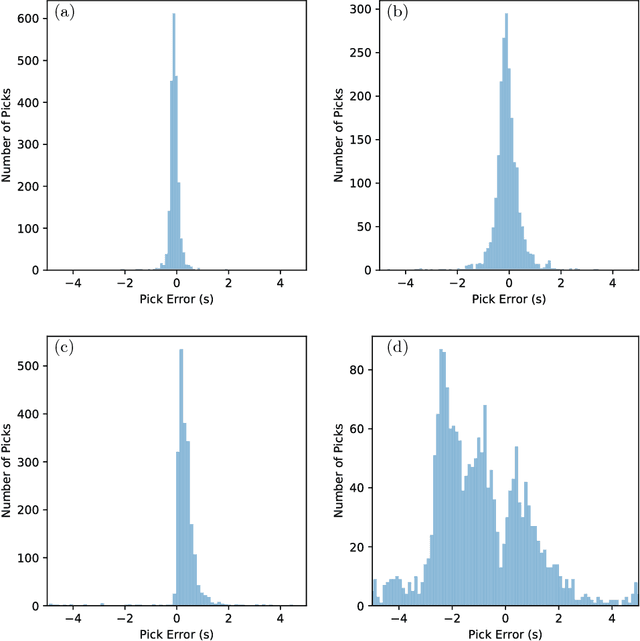
Abstract:The increasing volume of seismic data from long-term continuous monitoring motivates the development of algorithms based on convolutional neural network (CNN) for faster and more reliable phase detection and picking. However, many less studied regions lack a significant amount of labeled events needed for traditional CNN approaches. In this paper, we present a CNN-based Phase- Identification Classifier (CPIC) designed for phase detection and picking on small to medium sized training datasets. When trained on 30,146 labeled phases and applied to one-month of continuous recordings during the aftershock sequences of the 2008 MW 7.9 Wenchuan Earthquake in Sichuan, China, CPIC detects 97.5% of the manually picked phases in the standard catalog and predicts their arrival times with a five-times improvement over the ObsPy AR picker. In addition, unlike other CNN-based approaches that require millions of training samples, when the off-line training set size of CPIC is reduced to only a few thousand training samples the accuracy stays above 95%. The online implementation of CPIC takes less than 12 hours to pick arrivals in 31-day recordings on 14 stations. In addition to the catalog phases manually picked by analysts, CPIC finds more phases for existing events and new events missed in the catalog. Among those additional detections, some are confirmed by a matched filter method while others require further investigation. Finally, when tested on a small dataset from a different region (Oklahoma, US), CPIC achieves 97% accuracy after fine tuning only the fully connected layer of the model. This result suggests that the CPIC developed in this study can be used to identify and pick P/S arrivals in other regions with no or minimum labeled phases.
Pixel-Anchor: A Fast Oriented Scene Text Detector with Combined Networks
Nov 19, 2018

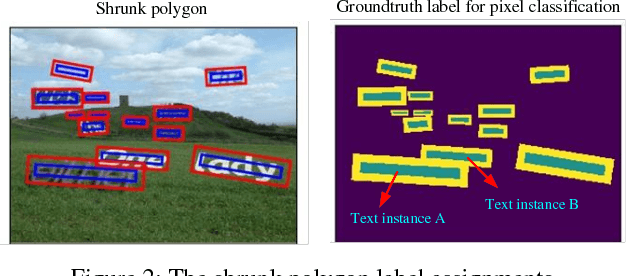
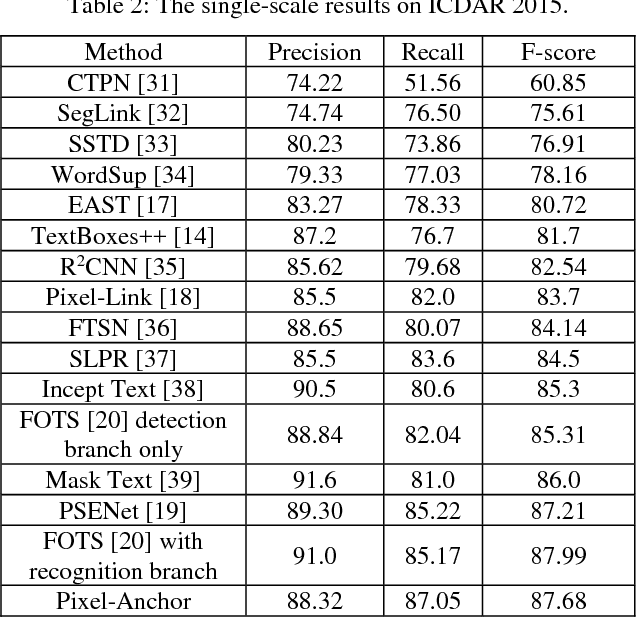
Abstract:Recently, semantic segmentation and general object detection frameworks have been widely adopted by scene text detecting tasks. However, both of them alone have obvious shortcomings in practice. In this paper, we propose a novel end-to-end trainable deep neural network framework, named Pixel-Anchor, which combines semantic segmentation and SSD in one network by feature sharing and anchor-level attention mechanism to detect oriented scene text. To deal with scene text which has large variances in size and aspect ratio, we combine FPN and ASPP operation as our encoder-decoder structure in the semantic segmentation part, and propose a novel Adaptive Predictor Layer in the SSD. Pixel-Anchor detects scene text in a single network forward pass, no complex post-processing other than an efficient fusion Non-Maximum Suppression is involved. We have benchmarked the proposed Pixel-Anchor on the public datasets. Pixel-Anchor outperforms the competing methods in terms of text localization accuracy and run speed, more specifically, on the ICDAR 2015 dataset, the proposed algorithm achieves an F-score of 0.8768 at 10 FPS for 960 x 1728 resolution images.
 Add to Chrome
Add to Chrome Add to Firefox
Add to Firefox Add to Edge
Add to Edge